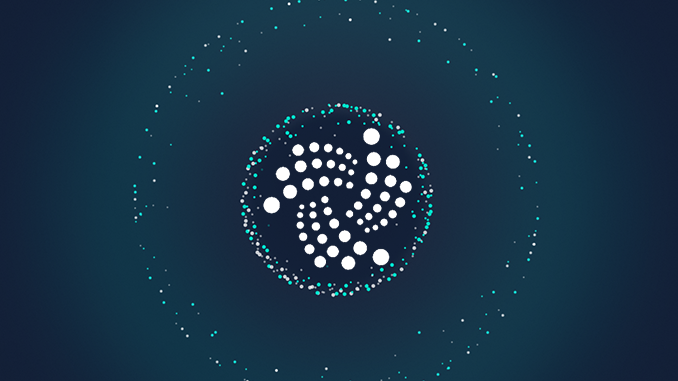
IOTA reports progress in technological renewal: tests have now stably reached more than 1,000 transactions per second (TPS) that IOTA can handle, and individual transactions are validated in an average of 10 seconds.
Speed and scalability are two of the most important performance characteristics for block chains and distributed ledgers, as they are crucial for the practicability of a crypto currency and its ecosystem. The long waiting times of sometimes up to an hour or more at Bitcoin to successfully complete a transfer cast doubt on the use of BTC as a means of payment in everyday life. At IOTA, which aims to set standards in the Internet of Things (IOT), speed and volume are naturally of paramount importance for transaction throughput. After all, IOTA is once supposed to link together vast numbers of devices, and no one wants to be stuck at the parking barrier in a car, for example, because the automated payment process in the IOTA network takes time to validate. That is why IOTA is working intensively on increasing the speed of transactions in addition to the major goal of decentralization. Now board member and co-founder Dominik Schiener reports on Twitter that IOTA has reached 1,000 transactions per second (TPS) in test environment and reduced waiting times to an average of 10 seconds.
The progress of #Chrysalis for #IOTA is absolutely amazing. We broke the 1000TPS mark, with transactions confirming in 10secs. After more testing and finishing the audit, it will come on the mainnet. (FYI, the visualization is at a lower TPS, but beautiful to watch) pic.twitter.com/f0pT1OZ7QK
— Dominik Schiener (@DomSchiener) July 30, 2020
Speed at IOTA compared to other cryptocurrencies
Bitcoin only reaches 7 TPS and users usually have to expect waiting times of ten minutes to an hour. The Lightning network should solve this problem, at least for smaller payments, but the Lightning network is still not widely used. Ethereum as the second most important crypto currency currently reaches about 15 TPS with waiting times of ten to twenty seconds, here Ethereum 2.0 should bring the turning point to more speed.
The values of 1,000 TPS and waiting times of ten seconds now reported by IOTA are therefore quite remarkable. As Dominik Schiener remarks, they are achieved under Chrysalis, which is supposed to upgrade IOTA’s Tanglenet and prepare it for a decentralized IOTA 2.0. Schiener says that the technology that is now being used will first be further tested and subjected to a security check before it is also used in Mainnet. Individual IOTA supporters are already celebrating the step towards the club of crypto-values, which is entitled to 1,000 TPS.
Meanwhile, however, Hedera Hashgraph (HBAR), for example, is already reporting 1,372 TPS, achieved in the application case for micro payments in the advertising industry and used by AdsDax and Zee Entertainment. Hedera Hashgraph promises waiting times of a maximum of five seconds at theoretically 10,000 TPS and more.
Ripple (XRP), on the other hand, sees itself equipped for up to 1,500 TPS. TRON (TRX) believes to have become infinitely scalable through an already implemented sidechain and at EOS the network monitor has an all-time record of almost 4,000 TPS. For TRON and EOS speed issues are especially important because these projects focus on DApps where blockchains should not be a speed limiting bottleneck.
Conclusion: progress at IOTA also in price development
The IOTA share price has been on a slow upward trend for several weeks now and is currently scraping against the USD 0.30 mark for the first time since February. IOTA is thus preparing to make up for the losses caused by the shutdown due to critical security problems at the official Trinity Wallet. The reason for this positive development is news such as that of Dominik Schiener, which points to considerable progress in the work on IOTA 1.5 (Chrysalis) and IOTA 2.0 (Coordicide). However, investors should not ignore the successes of the competition in terms of scalability and should also know that implementation in Mainnet is still to come. A benchmark for the crypto industry from the real economy is often the 50,000 TPS with barely noticeable latency, which centralised networks such as that of the credit card association Visa reach.
Best place to buy Bitcoin:

Leave a Reply